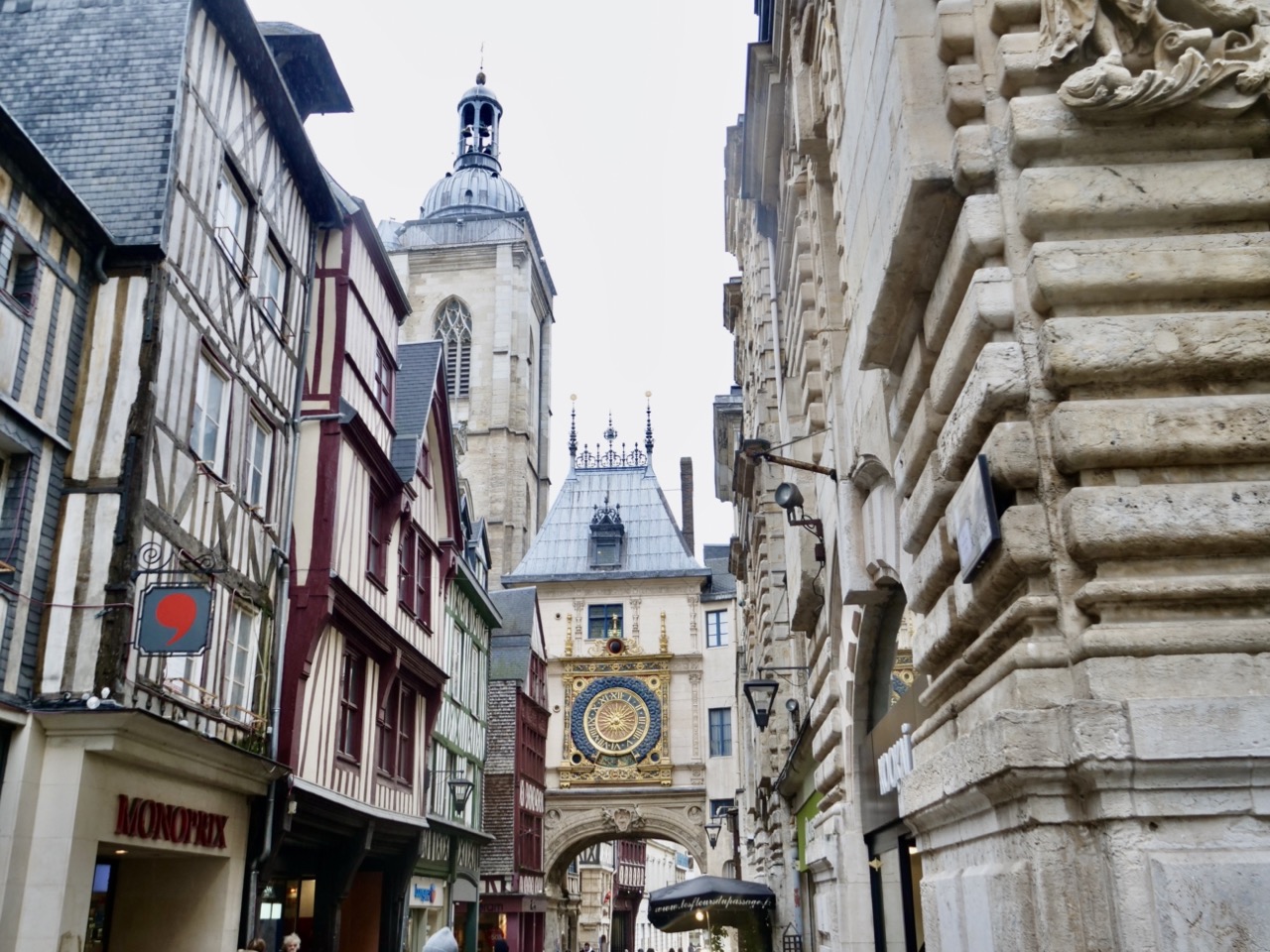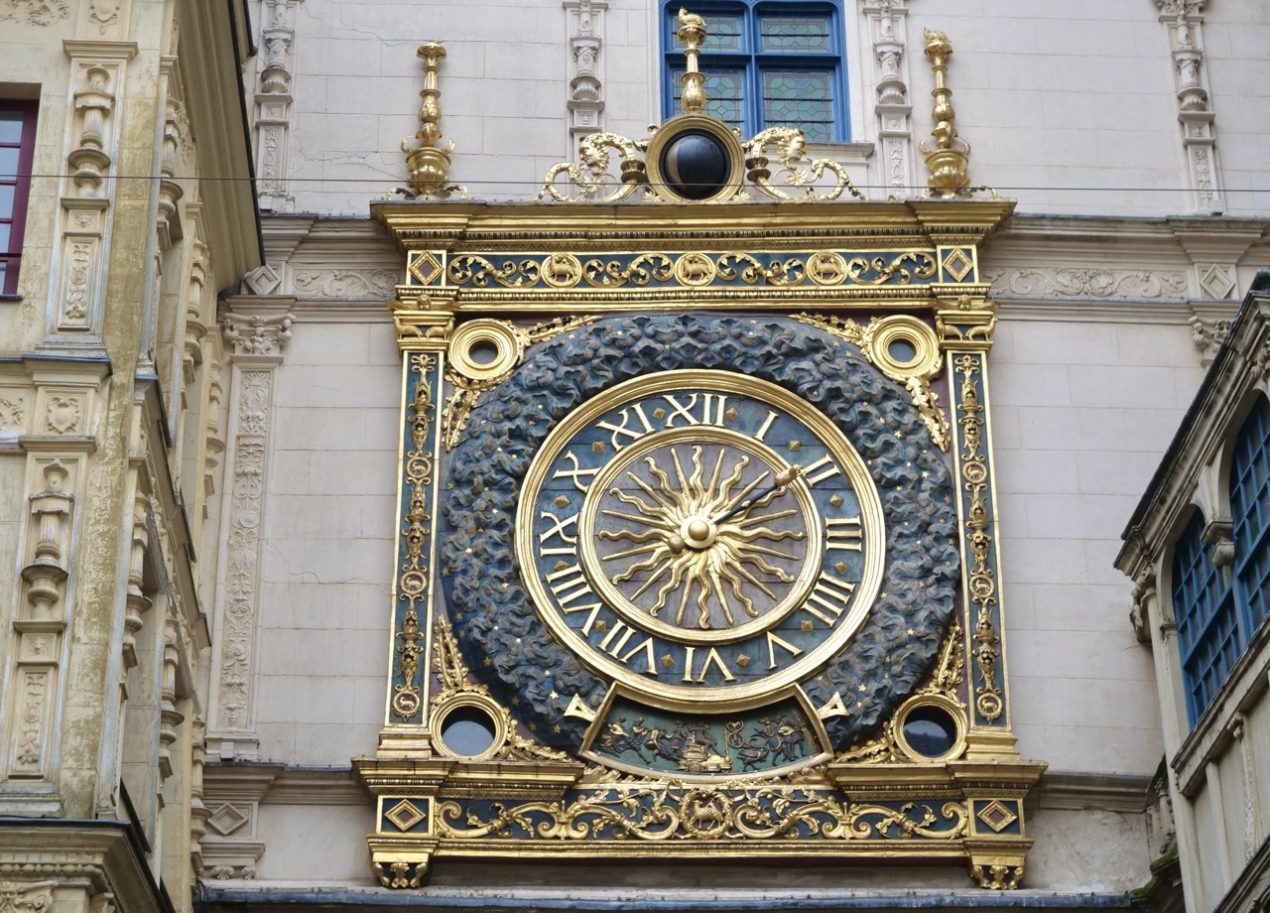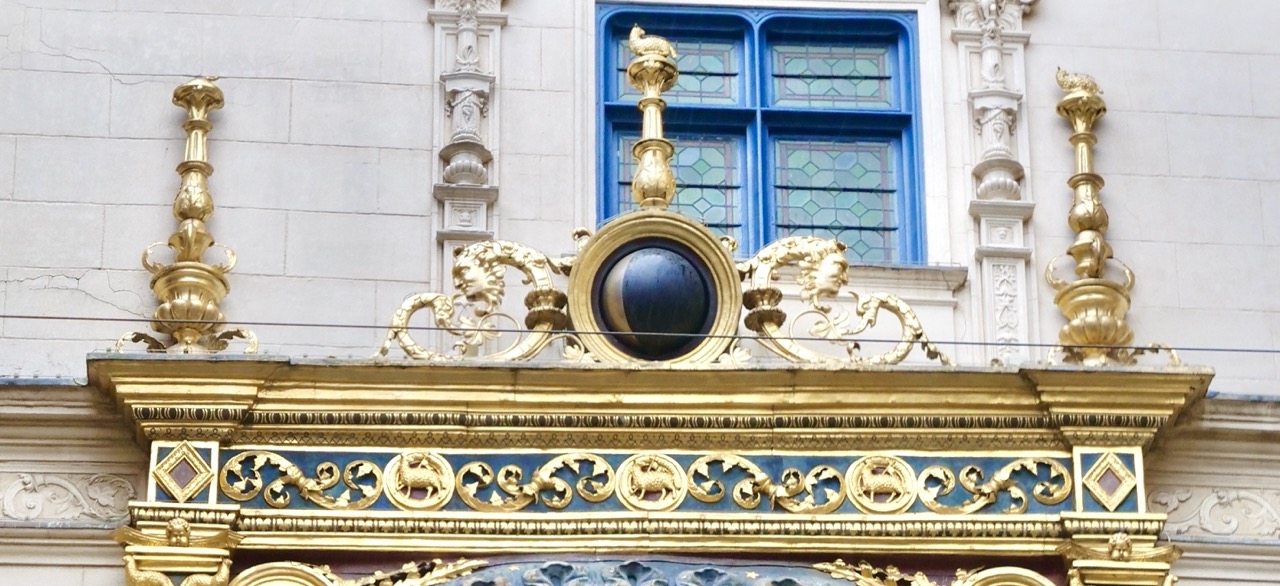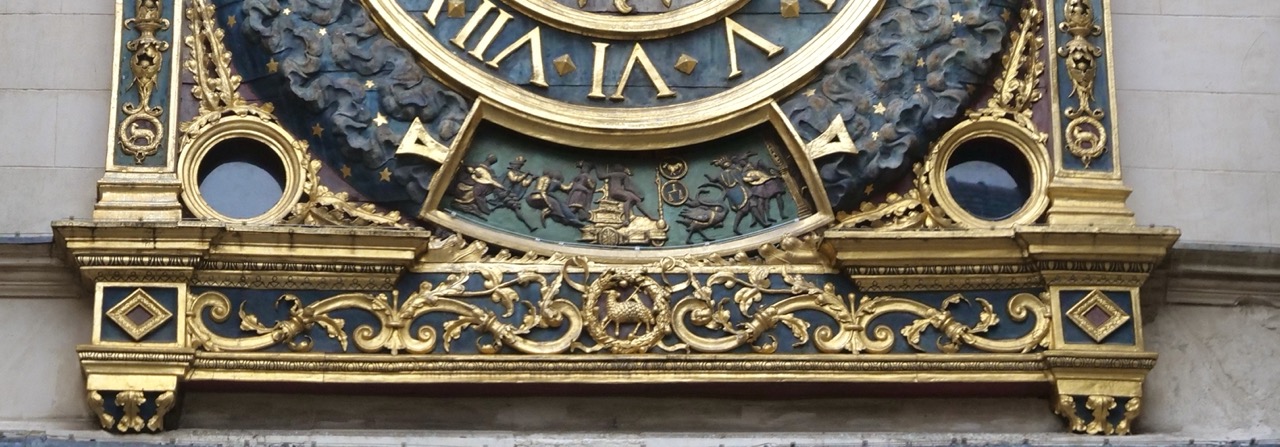The Big Clock is an emblematic monument of the city of Rouen. It is an essential point of passage and is located at the intersection of two of the most beautiful streets in the city. Indeed, at the corner of the rue Massacre and the rue du Gros-Horloge is the second most famous monument of Rouen, just after the cathedral. But the Gros-Horloge is not only a clock face, in fact, there are also two. It is also a tower, a fountain, an arch, and a splendid building dating from the Renaissance.

Nota bene: It took ten thousand gold leaves during the last restoration of the two dials. The building has two clocks, one in the direction of the cathedral and the other one in the direction of the marketplace.
The Big Clock, an emblematic monument of Rouen

The history of the Big Clock of Rouen begins in 1382 and a revolt of the Rouennais. Charles VI, then King of France, decided to destroy a belfry in retaliation. A very convenient way to establish his authority over Norman city. A few years later, in place of the destroyed belfry, the clock tower was built. The work began around 1389 and was completed nine years later. Unusually, the clock was built on top of an annex building. This is how the city of Rouen got one of the oldest public clocks in France.
To find the Gros-Horloge in Rouen, nothing could be easier, just look for the spire of the cathedral and then walk along the rue du Gros-Horloge. The opportunity to discover typical facades of the medieval city center of Rouen. This emblematic monument in Rouen is located between the marketplace and the Notre-Dame cathedral.
Where does the name of the “Gros-Horloge” come from?
The first thing that tickles the mind of visitors or tourists in Rouen is why we don’t use the feminine to designate this place so emblematic of Rouen. It would actually be more logical and perhaps more correct to say in french “Grosse-Horloge”.
In fact, the word clock is a Latin word. It comes from the word Horologium which was borrowed from the Greek word “hôrologion”. This is the reason why in the Middle Ages the masculine and feminine forms were used interchangeably. That’s why you will listen and read this form “Gros-Horloge”.
The dial, in the figures
The sundial is 4.6 meters high and 3.8 meters wide. There is only one hand that gives the time. The axis, the hand, and its notched wheel form a whole that weighs a little over four hundred kilos.
The sun which is located inside the Roman dial is made up of 24 branches. A way to mark the half-hours.
the lunar calendar

Above the dial, we can notice a globe which is in fact a lunar calendar. This lunar globe allows visualizing the aspect of the Moon at the moment T.
A way to understand immediately if the moon is in ascending or descending phase. A silver face and a black face allow materializing of the total rotation of the star over a period of 29 days. (28 days and one day of the black moon)
the weekly calendar

At the bottom of the dial, a large band indicates the day of the week. This weekly calendar is a wheel of 3.4 meters in diameter.
photo credits: Yann Vernerie